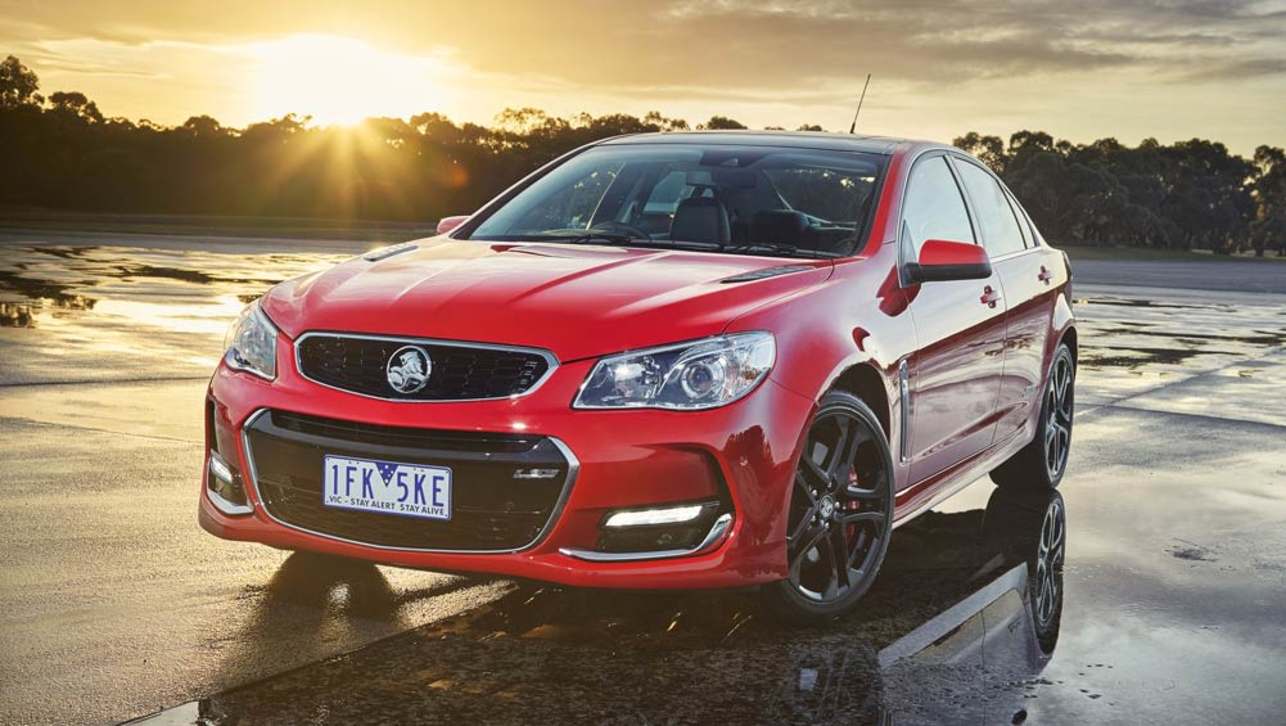After two years of modest profits Holden has posted its second-biggest financial loss on record -- as the car maker bluntly admits it is losing money on locally-made vehicles.
“We are losing [money] on our locally produced cars and that’s obviously a position we need to reverse,” said Holden chief financial officer George Kapitelli. “What the headline numbers today don’t show is the difference between General Motors profitability versus Holden profitability. Holden’s imported portfolio is profitable. The losses we have talked about today are a direct result of Holden building cars in Australia.”
Holden was $152.8 million in the red in the 2012 calendar year despite $73.5 million in government funding. Its biggest result in the red was $210.6 million in 2009.
The 2012 figure means Holden has lost $730 million over six of the past eight years, and a $202 million profit over the same period.
The last time Holden finished in the black, in 2011, the profit of $89.7 million was identical to the taxpayer funding it received in that calendar year. In 2010, Holden posted a profit of $112 million after receiving $100 million in taxpayer assistance.
An analysis of Holden’s financial results over the past 13 years shows the car maker returns an annual average profit of $64 million from an annual average turnover of $5.5 billion.
Holden’s biggest profit since the year 2000 was $300 million after a record turnover of $6.8 billion in 2004, immediately before five consecutive years of losses.
Holden’s revenue was down by $300 million (or 7 per cent) to $4 billion in 2012, its second lowest figure in the past decade as Commodore production fell to record lows and Holden posted its lowest sales in 19 years, despite a record high new-car market.
Despite the gloomy results Holden described it as “a world class balance sheet”. “Holden has zero debt, strong cash reserves … and a very healthy pension fund. I think this is a position that many companies across the world aspire to, but few achieve,” Kapiltelli said. “Despite the loss Holden is well positioned for future profitability, with a strong and healthy balance sheet and zero debt.”
Holden says the company made money in 2012 but the financial loss was primarily due to the devaluing of its Elizabeth car making factory because of its reduced output ($198 million), and redundancy packages which saw hundreds of factory workers leave the company ($27.8 million).
Holden says it is the most trade-exposed of the local manufacturers, with 60 per cent of sales from the locally produced Commodore and Cruze.
Holden hopes to turn its fortunes around with the new Commodore range going on sale this Friday -- with price cuts of up to $10,000 -- ahead of a showroom debut in June.
A new mid-size sedan and a new compact SUV due later in the year will also enable Holden to compete in lucrative market segments where it has been absent.
Leaner production costs after the latest round of redundancies will also contribute to Holden’s financial health, as it “right-sizes” its business.
“We have restructured our manufacturing operations to improve productivity, reduce structural costs and match production to demand, and at the same time we’re focusing on new products and marketing initiatives to ensure our future competitiveness,” Holden boss Mike Devereux said, adding that the company invested $197 million in research and development and spent $100 million on factory upgrades in 2012.
Meanwhile Holden says it has extended its latest voluntary redundancy program to allow factory workers more time to assess their options. Last month the company announced it would cut 400 jobs at its Elizabeth car assembly plant near Adelaide and 100 engineering jobs in Melbourne.
“We haven’t closed the voluntary redundancy process yet,” said Holden director of government and corporate affairs Matt Hobbs. “We continue to work with our employees and representatives to ensure everybody understands what is on offer and what would be right for them personally.”
When asked if Holden would resort to forced redundancies if it couldn’t get the numbers, the spokesman said: “We will work with employees if we are unable to reach those numbers. We have had more than 500 expressions of interest, people making enquiries about what their package might be, but we are yet to finalise how many workers have made a formal request.”
Toyota Australia announced 350 forced redundancies at its car factory in the Melbourne suburb of Altona in March last year. At Ford, of the 330 factory jobs cut at Broadmeadows and Geelong in November last year, only 120 were voluntary.
The 500 job losses Holden announced last month follow 180 job cuts at Elizabeth in November 2012, and a further 40 at the Port Melbourne engine plant in March 2012.
It is the biggest single redundancy program since Holden axed 500 positions in July 2009 in the wake of the Global Financial Crisis, after exports of the Commodore to the USA ended when the Pontiac brand was shut down.
The latest cutbacks will take Holden’s factory workforce at Elizabeth down to 1750 -- just 50 more than at Ford. At its peak, Holden employed 7350 factory workers in 2004, its biggest production year in the past decade. Back then Holden built 165,000 cars compared to a forecast of 74,000 this year.
Holden says its negotiations with the South Australian, Victorian and Federal governments about further assistance are "ongoing".
Mr Devereux said Holden was holding "open and honest communication with both sides of government" because "this industry is far too big and far too important for the country to let it go and we're committed to making sure it's here for a long time to come".
This reporter is on Twitter: @JoshuaDowling
Holden in 2012: a look at the books
New-car deliveries: 114,665 (the lowest in 19 years)
Commodore deliveries: 30,532 (the lowest in 34 years)
Revenue: Down 7 per cent to 4.0 billion (compared to $4.3 billion in 2011, $4.4 billion in 2010 and a peak of $6.8 billion in 2004).
Financial result after tax: $152.8 million loss (compared to $89.7 million profit in 2011 and $112 million profit in 2010).
Taxpayer funding: $73.5 million (compared to $89.7 million in 2011 and $100 million in 2010).
Research and development investment: $197 million (compared to $231 million in 2011 and $179 million in 2010).
Vehicle production (Elizabeth, SA): Down 9 per cent to 82,172 (compared to 90,424 in 2011 and 66,000 in 2010).
Engine production (Port Melbourne, VIC): Down 26 per cent to 74,526 (compared to 101,000 in 2011 and 98,000 in 2010).
Exports: Up 14 per cent to 13,778 (compared to 12,000 in 2011 and 8000 in 2010. At its peak Holden exported 60,518 cars in 2005, mostly to North America, when the Australian dollar bought approximately 75 US cents).
Holden: the bottom line
2000: + $237.4 million
2001: + $285.1 million
2002: + $256.6 million
2003: + $285.6 million
2004: + $300.9 million
2005: - $144.6 million
2006: - $146.6 million
2007: - $6.1 million
2008: - $70.2 million
2009: - $210.6 million
2010: + $112.4 million
2011: + $89.7 million
2012: - $152.8 million





.jpg)
.jpg)



.jpg)
.jpg)

.jpg)


.jpg)


.jpg)


.jpg)







Comments